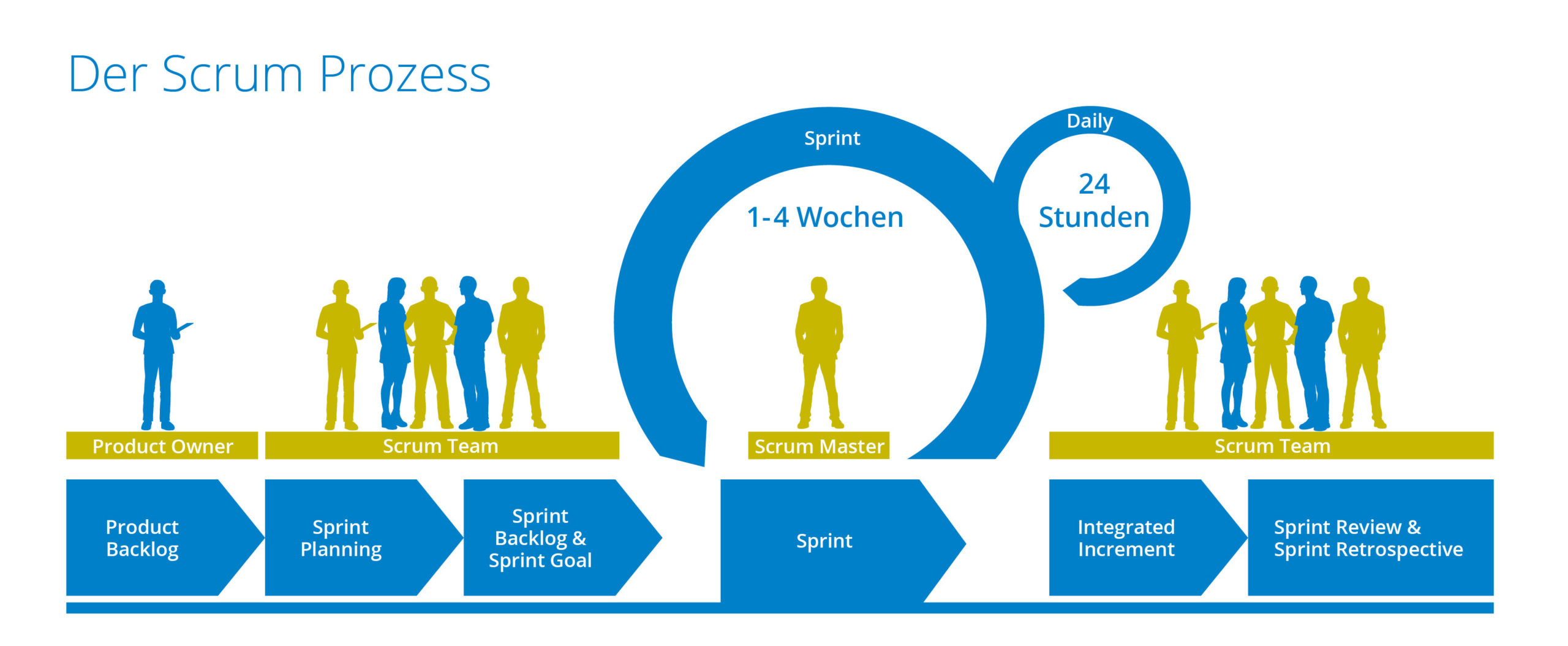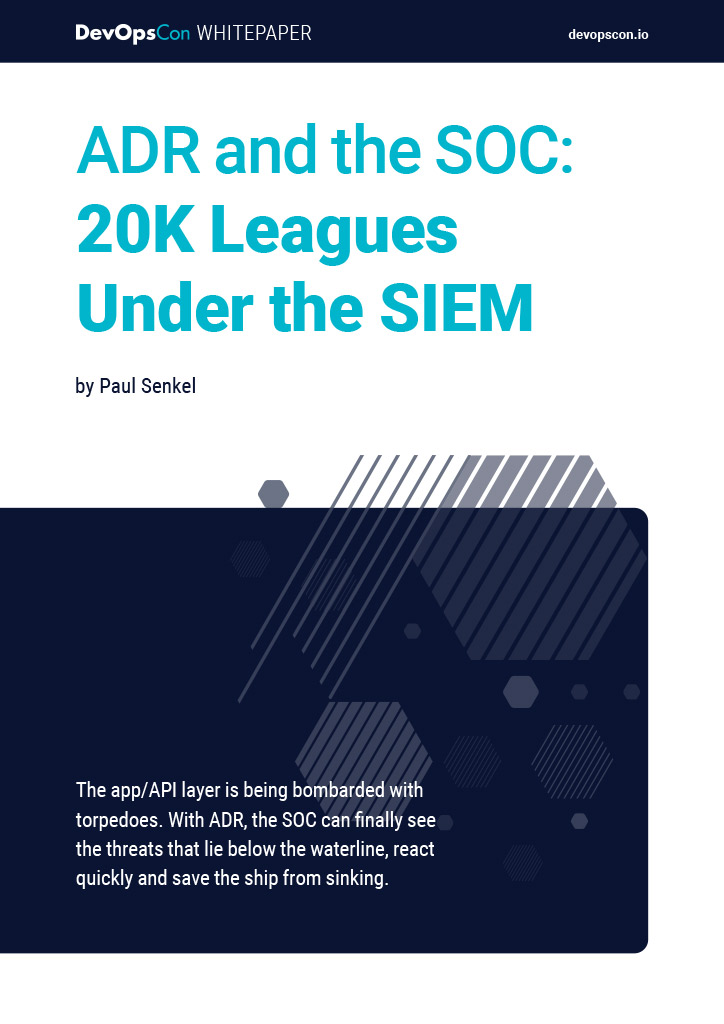Yet, the path to this goal is still characterized by paradigms that are more than 30 years old. Sometimes it still feels difficult to take bold steps, even if processes have been clearly tested and evaluated thousands of times before by others. In the following, we will uncover what opportunities are presented by agility and how to set the right course for unlocking them.
STAY TUNED
Learn more about DevOpsCon
How human psychology and agile values influence the process
As early as 2001, three out of four points within the Agile Manifesto [1] highlighted that people must play a central role in leading projects towards success. “Individuals and interactions”, “customer collaboration” and “responding to change” promote a mentality that supports success. The journey leading up to this point was long, with momentum from Ken Schwaber and Jeff Sutherland in the ’90s, as well as Hirotaka Takeuchi and Ikujiro Nonaka in the ’80s.
Collaborative teams are more powerful than a few high-performing individuals. Increased competition, rapid globalization, and the battle for talent make it necessary to be present in the market using approaches that combine added value and strengthen team building all at once. Every person brings their own unique qualifications, strengths, and weaknesses to the table. Unlocking these synergies and making them usable is a process; it cannot be approached in a binary way or by simply pressing a button. Rather, it is a joint transformation process that begins within each member of the implementation team. For this transformation to succeed and the full potential of synergies to be unlocked, the gap to the customer must be closed and the bond between both must be strengthened.
Scrum removes hierarchies inside of the implementation team. The power is shifting away from classic key positions such as the project manager, and not just because the role does not exist in Scrum. Decisions aren’t made solely by a team lead or a senior architect. Instead, each set of eyes opens a new perspective and the entire team’s wealth of experience is the key to success. In order to be successful with agile approaches and, to a larger extent in Scrum, the first step is to start with your own way of thinking: Be open, dare to experiment, accept new things, and allow for mistakes.
Scrum’s intention is not to gaze into a crystal ball and decipher a precise path that will lead to the finish line. It is a challenging balance between learning empirically, becoming more flexible and improving along the way. Meanwhile, fixed events such as dailies, reviews and retrospectives help facilitate this.
Scrum puts people in the foreground. It gives people more privileges, but also demands more from them. Individual responsibility and self-organization change behaviour patterns away from blunt execution, allowing development teams to grow into consultants as well as partners. Through this alone, there are immense gains in knowledge distribution, a team’s backup capabilities, quality through the four-eyes principle, and a sense of accountability towards one’s own goals. If someone is purely an executive, they will often remain bound to set specifications and guidelines, never reaching the next level. Identifying with the entire process and one’s own work leads to better consulting, thorough understanding of business processes, and open discussion of weak points and possible alternatives. This not only broadens the horizons of everyone involved but also helps identify, introduce, and implement an optimal solution for each customer. This results in new incentives, challenges, and perspectives for every individual.
Complex projects in a complicated world
Modern IT projects are characterized by a variety of complexities. Nowadays, it is rarely sufficient to put one system into operation – rather, you need the assembly of several subsystems. What would a website be without a store? A store without recommendations? Recommendations without personalization? Personalization without content? This chain of thought from the domain of digital experience is just one of many examples. It illustrates how difficult it has become to identify necessary requirements, write them down, and carry them over into a classic waterfall implementation. In three years, many technologies will already be obsolete and new technologies will arise. Even before the coronavirus, demands and challenges within development were high. Continuously adapting to such circumstances is necessary in order to remain successful. At its core, Scrum works precisely towards this inspection and adaptation process by repeatedly weaving in review points through established events in its framework, offering the chance for continuous reflection (Fig. 1).

Fig. 1: Scrum pillars (Source: adesso SE)
Scrum also provides an opportunity to make these things tangible, while retaining flexibility and the ability to act. Working with prioritized backlogs helps focus on the essentials, without forgetting to look ahead. Focusing on the near future helps reduce wasted effort and establish a mentality of flexibility. This approach requires clear decision making about what the product needs and where to make changes. The goal is added value, not only after several years of development, but from the start. The customer, stakeholder, or investor should be involved and participate in their project, to give their goals clarity, and build trust within the team. The focus is not on a glorified goal, but on efficiency in relation to customers’ needs, while working towards it in the best possible way.
At the same time, agility in Scrum should not be confused with chaos. Every role has clear goals and responsibilities that need to be taken care of in order to move forward in a structured manner. The Product Goal that the Product Owner is pursuing should be clearly visible to everyone at all times. Implementation in iterations leads to repeatedly arriving at new junctions, which requires making new, carefully considered decisions. This ensures crisis resilience and makes change management an integral part of the formula. If an experienced Scrum Master manages to strengthen collaboration in all areas, enrich it with their knowledge, and connect the underlying company structures, then they will create a valuable platform for years of collaboration to come. In the end, complexity is replaced with transparent development cycles, openness, and direct collaboration. Everyone is integrated with the process; everyone provides a benefit and brings individual added value along (Fig. 2).

Fig. 2: Scrum timeline (Source: adesso SE)
Numbers, Data, Facts
Making sure that Scrum is based on not just values and perspectives, but also on substantial evaluations, it’s worth taking a look at the Standish Chaos Report. The Standish Chaos Report has been providing information about how successful projects are and what their success factors were for many years.
The main reasons for success are interesting and full of insights when dealing with agile approaches, in particular Scrum. The identified key success factors were presented early on in the 2012 report and are very human-centered:
- End-user involvement
- Support from upper management
- Clear requirements
- The main issues that lead to project failure are:
- Lack of user input
- Incomplete or unclear requirements
- Frequent changes in requirements
A look at concrete numbers from 2015 sharpens the picture and provides a deeper insight when it comes to project sizes, approaches to development, and investment security. Here, success means that the project achieved its goal as planned in terms of time, finances, and functional scope. Project termination means a potential loss of investment.
Figure 3 from the 2015 Standish Chaos Report further illustrates the opportunities presented by agile approaches.

Fig. 3: Opportunities offered by agile approaches [2].
Due to the nature of Scrum and its incremental structure, integrated change management for each sprint, a clear integration of customers in the requirements elicitation, prioritization, review, and retrospective, the course is already set in advance to successfully achieve the goal. Anyone who refuses to openly experiment with Scrum is depriving themselves of opportunities to cultivate the mindset of their colleagues, transfer responsibility, and ultimately become more economically successful in the process.
An Agile Journey: Training, Coaching, and Agile Transformation
Training and certification are necessary steps to introduce employees to Scrum. It will immerse them in the subject matter and prevent misunderstandings. They offer an opportunity for the company’s employees to develop into new positions and to take on areas of responsibility in a more integrated way. Because Scrum puts people first, it’s necessary to take everyone along on the journey and prepare them for it. If you try to take a shortcut, you will likely encounter problems with acceptance and a loss of knowledge. Everyone is important for getting started and existing expertise is indispensable.
Besides the initial training, agile coaching offers the opportunity to have your process reflected on and supported from the outside. Since Scrum is a framework and allows for individual adaptions, it makes sense to be inspired by new impulses and share your experiences with other departments too. And because there are plenty of Scrum allies worldwide, you can draw from an immense repertoire of experience and toolkits.
In addition to all of these building blocks, experimenting with Scrum is a foundation for agile transformation. Scrum is used with complex requirements because of its excellent reputation; therefore, it is often used in development – but it also adds value to the surrounding business processes and departments. Once the first projects and processes have been carried out with Scrum, the open view into the company structures lets others participate in this new approach or derive it individually for themselves. Therefore, Scrum and agility in the broader sense are not fixed to individual projects, products, or departments.
A framework for self-development, not a Biblical source
One frequently missed opportunity is the realization that Scrum is a framework. Scrum requires establishing certain foundations because efficiency and success depend on them. However, the procedure itself is not set in stone. It provides a framework, which can have a very individual implementation. If more frequent decision-making and risk minimization is needed, then the length of the sprint is adjusted. If requirements are complex, then more frequent refinements or expert rounds can be established. User stories, burndown charts, and JIRA are just some of the many ways you can display work and progress, but there are significantly more diagrams, requirement representation variants, and ticket tools available. Approaches such as flow optimization and active-passive columns according to Kanban can also be usefully integrated. The daily coordination does not have to be boring and identical, nor does it necessarily have to be based around “the three questions”. It can also be done using existing user stories or by including bug processes. The only important thing is the possibility of using inspection, adaptation, and transparency.
The Scrum toolkit is much more powerful than it seems at first glance. The framework is described in just under ten pages, which offers room for development and design in your own context. It takes courage and openness to take on new ventures and discover better implementations for yourself. At the end of the day, everyone has to work for their own success, but Scrum can be a powerful companion and open up new opportunities.
STAY TUNED
Learn more about DevOpsCon
Links & Literature
[1] https://agilemanifesto.org
[2] https://www.standishgroup.com/sample_research_files/CHAOSReport2015-Final.pdf






 6 months access to session recordings.
6 months access to session recordings.